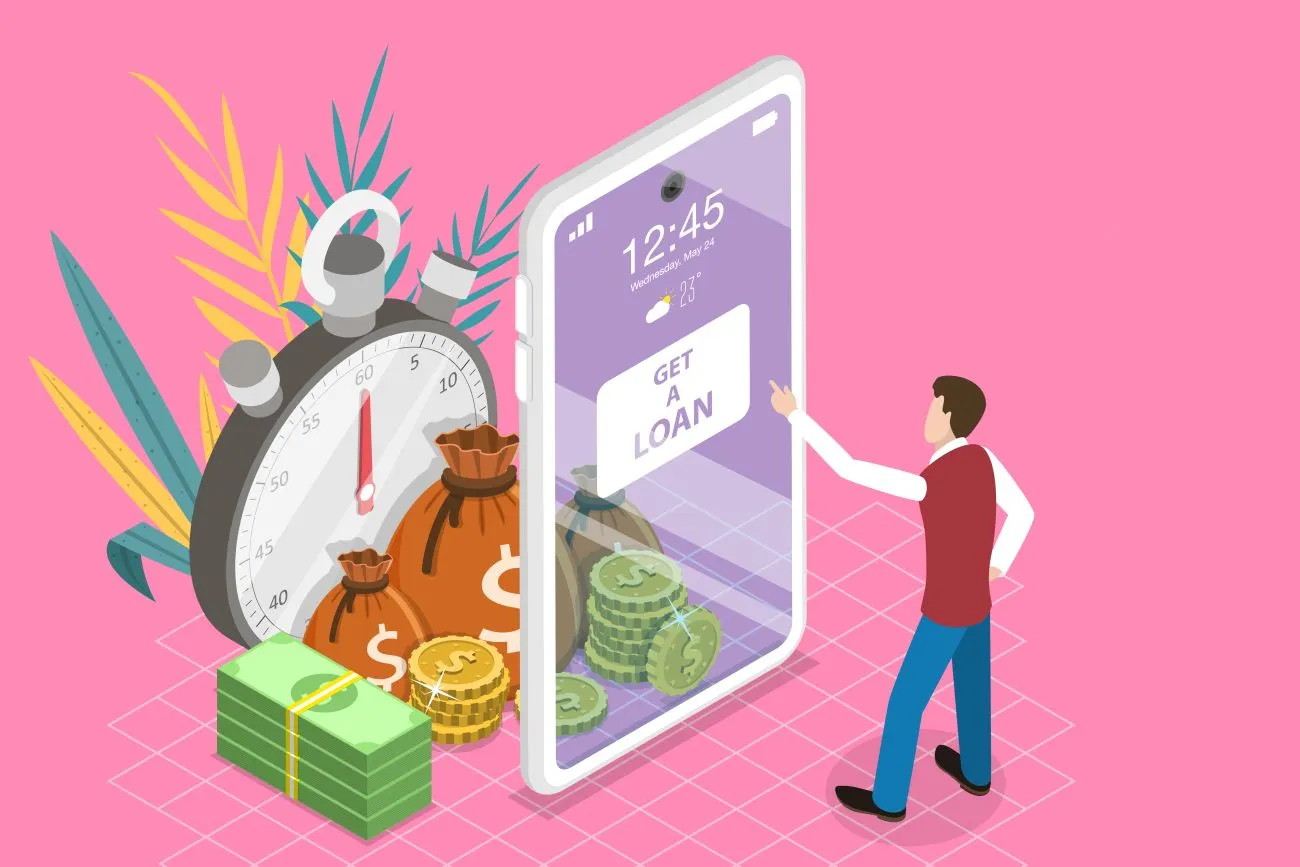- Personal, pay date, education and auto loan apps are available from some lenders.
- Gathering information about your expenses, income, and credit history before you apply can streamline the process.
- Only apply for loans through trusted apps on secure private Wi-Fi connections.
- Compare loan products and rates from multiple lenders before you apply.
- Complete just one loan application at a time to benefit your credit score.
Loans allow you to obtain money to make a major purchase, pay off other debts and cover emergency expenses. With any type of loan, a financial institution agrees to give you access to a sum of money that you pay back with monthly payments. In exchange for this service, you agree to pay interest on the balance owed, so you ultimately give the financial institution back more money than you paid. The biggest benefit to loans is that they’re typically less costly than credit cards, which usually carry very high interest rates.
If you wish to apply for a loan, you don’t have to find time to stop by a bank. It’s not even necessary to use a laptop or desktop computer. More and more lenders now make it possible for you to apply for loans right from your smartphone. This guide outlines how to find the right loan for your needs and how to apply using your phone.
 TarikVision / Shutterstock
TarikVision / Shutterstock1. Decide on the Right Type of Loan for Your Needs
Many types of financial products fall under the category of loans, and financial institutions often provide only some types. As a result, knowing which one you wish to apply for is an important first step. Personal loans are general agreements that provide money you can use to pay for whatever you wish. Other types of loans are reserved for specific purposes, such as education loans for post-secondary education and auto loans that fund the purchase of new or used vehicles.1 Payday loan companies provide smaller short-term loans that you repay, usually along with hefty interest, with your next pay cheque.2
2. Consider Secured vs. Unsecured Loans
Before you go further with the application process, take the time to consider whether you have any collateral you can pledge to the financial institution. If you default on your loan, the lender can take ownership of the collateral and sell it to recover the money you owe. Cars, homes, and certificates of deposit are examples of items you can pledge as collateral. Collateralised loans are called secure loans, while ones that aren’t are unsecured. Generally, secured loans have looser requirements and carry lower interest rates.
3. Determine How Much Money You Require
With a loan, you pay interest on the entire amount of money you borrow because you receive the proceeds as a lump sum. This differs from how interest is assessed for credit cards and lines of credit, where you only pay interest on what you spend. Because of this interest accrual structure, you should be careful to borrow only as much money as you need. If you’re uncertain, get estimates or do further research before you proceed with the application process.
4. Create a List of Your Expenses
When you apply for a loan via mobile app, you’ll likely need to answer questions about your monthly expenses, as financial institutions consider your ability to repay the loan when evaluating your application. Write down the amounts of your monthly rent or mortgage payment, utility payments, insurance premiums, council rates, loan or credit card payments, food expenses, transport costs, and any other regular expenses. Add up the total amount of your monthly obligations for your reference.
5. Gather Proof of Income
Your income also helps lenders decide if you have the ability to pay back what you borrow. Create a second list of all of your household income, including wages, government benefits, pensions and investment income. Make note of how much you receive monthly from each source. To calculate your total monthly income, add up the figures. If you receive child support payments, you may not be able to include them in your income, depending on the lender. As a result, calculate both with and without it to simplify the application process.
6. Evaluate How Much of a Payment You Can Afford
The financial institution will consider your monthly income and expenses when you apply for your loan. Evaluating your income and expenses ahead of time yourself is important because it can help you spot errors and give you a feel for how much of a payment you can afford. Start by subtracting your total expenses from Step 4 from your total income from Step 5. You should look for loans with payments that are lower than the results. Don’t forget to leave room in your monthly budget for savings and incidental expenses.
7. Check Your Credit Report
Now that you have a clear picture of your loan repayment ability, you should turn to the second big determiner of whether lenders will grant your loan request: your credit history as reflected by your credit report. Under Australian law, you can request a free copy of your credit report once every three months. To get a full picture of what lenders will see when they check your credit, request a report from each of the three main agencies: Equifax3, Experian4, and illion5.
8. Dispute Incorrect Information
When you receive your credit reports, review them carefully. Make sure the information matches up between all three credit reporting agencies, and be on the lookout for any debts that you repaid or don’t belong to you. If you find any errors or discrepancies, file a claim with the credit reporting agency. Most agencies let you do so online. If the credit bureau doesn’t correct the mistake, you can complain to the Office of the Australian Information Commissioner. Don’t apply for a loan until you get the issue resolved.6
8. Research Mobile App Options
When you’re satisfied that your credit report is accurate, you can begin to research lenders with loan application apps. Although the app store for your device may seem like the best place to start, you should instead look to see which trusted financial institutions offer apps. Doing so will lower your risk of falling victim to loan scammers. More and more lenders are rolling out mobile loan apps to meet customers’ needs. Some reputable apps to consider include Bank Australia, loans.com.au, Australian Mutual Bank, and MoneyMe.
9. Take Steps to Safeguard Your Information
Using your smartphone to apply for a loan is convenient, but it can also open you up to the risk of identity theft. Cybercriminals can obtain valuable information, such as your personal identification number, tax file number, and driver’s license number, from your applications. To protect yourself, never apply for a loan when your phone is connected to public Wi-Fi. You should also be careful to only download apps from reputable sources. Because the app may store sensitive information, take advantage of any advanced security features your smartphone offers, such as face identification.7
10. Compare Loan Options and Rates
Before you apply for a loan, check out the rates and products available from at least two or three lenders. Some mobile loan providers may allow you to browse rates and loan products on your phone’s web browser before you download the app, while others make that information available in the app only. This means you may need to install some apps before you can research their offerings. As you look at rates side by side, keep in mind that most companies disclose an average or minimum rate. The actual rate you’re assessed may be higher.
11. Complete the Loan Application
After weighing your options, choose the lender that best suits your needs and begin the application process. Although it may be tempting to apply to more than one place, don’t unless your first application is declined because each credit report enquiry can potentially impact your credit score. The procedure for filling out loan applications on mobile apps varies. Most apps have easy-to-follow on-screen instructions to guide you through every step of the application process. Double-check that you’re entering the correct information to expedite processing.
12. Provide Any Necessary Documentation
After you submit your loan application, the underwriters of the financial institution will review your application and decide whether to grant you the loan you requested or make a counteroffer with a lower loan amount or higher interest rate. In some cases, you’ll need to provide documentation to back up the information you provided to the lender. For example, you may need to scan or photograph a pay stub or bank statement. Be careful about transmitting sensitive info via email. Uploading it to the app may expose you to less risk of identity theft.


